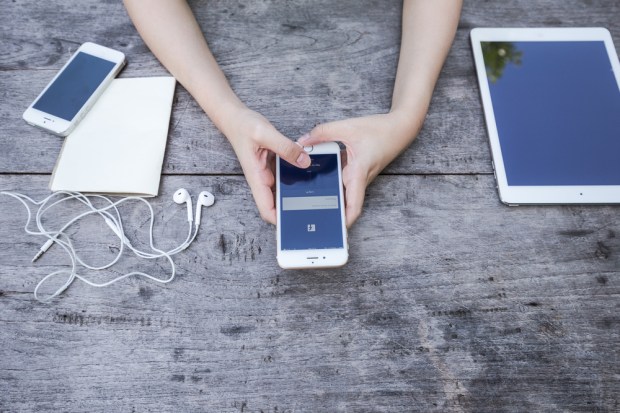Facebook Tracker: Feature Growth

Facebook stock (FB) was trending upward in midweek trading, with mid-day values on Wednesday (Feb. 8) rising 1.68 percent from the previous day’s close, up to $134.06.
Though the numbers haven’t seen much net movement upward since mid to late January (when prices sat just below $133), Facebook appears to have finally broken out of the minor dip in stock value it saw through November and December of last year and into the beginning of this year. Facebook’s market cap currently sits at over $385 billion.
Last week, the company’s Q4 earnings blew past analysts’ expectations in a number of segments. Though the company’s growth has continued to slow (it’s hard to keep up the pace when the numbers are already so high), Facebook still managed to beat out analysts’ estimates for revenue, ads, monthly and daily users and engagement.
Facebook brought in $8.81 billion in revenue in Q4, meaning $27.6 billion in revenue for all of 2016. Mobile remained at 84 percent of Facebook’s total ad revenue in Q4, accounting for $7.25 billion. And even as the number of desktop users fell in Q4, desktop ad revenue was still up 22 percent.
User numbers also beat out estimates, hitting 1.86 billion in the quarter, up 3.91 percent, or 70 million, from Q3. Monthly mobile users grew to 1.74 billion and mobile-only users hit 1.149 billion.
Daily active users hit 1.23 billion worldwide, up 18 percent year on year and beating out 17 percent growth from last quarter. This indicates that, despite the overall growth slowdown, Facebook’s push to introduce live videos and become a source of news content continues to draw more of its users into daily sessions.
On the business end, Facebook recently began experimenting with advertising in its Messenger app, a move that could greatly increase the company’s total ad revenue if successful.
The vast majority of Facebook’s revenue comes from mobile and desktop ads, with the Messenger app representing some prime, but as of now untapped, ad real estate. The move could have everyone involved seeing green, especially since Messenger surpassed 1 billion users last summer.
Facebook is starting small, rolling out a test run in Australia and Thailand that enables businesses to place ads on the home screen of Facebook Messenger and below recent conversations.
Moving forward, new features and services will be what maintain and increase consumer engagement on Facebook. Video, social commerce capabilities and the company’s foray into news media are the three major, extensively documented plays to boost Facebook’s use cases. The past few weeks have seen a few new additions to Facebook’s consumer-facing products.
The first uses Lumos, Facebook’s image and video understanding, machine learning platform, to enable image search by content rather than relying on text or tags. The technology began as a company effort to use AI and computer vision to help visually impaired users identify image elements.
The search recognizes objects in images, as well as some actions — “people walking,” “people dancing,” “people playing instruments,” for example — with more recognizable actions upcoming. Eventually, the company hopes to expand the recognition capabilities to video content.
The image search feature is now available to mobile and web users in the U.S. No word yet on when image search will be available in other regions.
Facebook also just announced that its “Safety Check” tool, which enables users to mark themselves as “safe” during or after a crisis, is getting some serious capability upgrades. The feature now allows users to find access to food, shelter, transportation, supplies, equipment and other resources in an emergency. The update, called “Community Help,” also allows users to offer aid to others.
“With Community Help, people can find and give help and message others directly to connect after a crisis,” said Facebook VP of Social Good Naomi Gleit in a company blog post. “We saw the community do this on their own through Groups and posts, like in the aftermath of the flooding in Chennai, India, in 2015, but we knew we could do more. We also talked with experts, humanitarian relief organizations and our own in-the-field research to learn how to make it easier for people to find and give help.”
At first, Facebook will make the feature available after “natural and accidental” incidents, the company said, such as an earthquake or building fire. The feature will first roll out in the U.S., Canada, Australia, New Zealand, India and Saudi Arabia, with plans to expand worldwide and to facilitate disaster aid for additional types of incidents.
